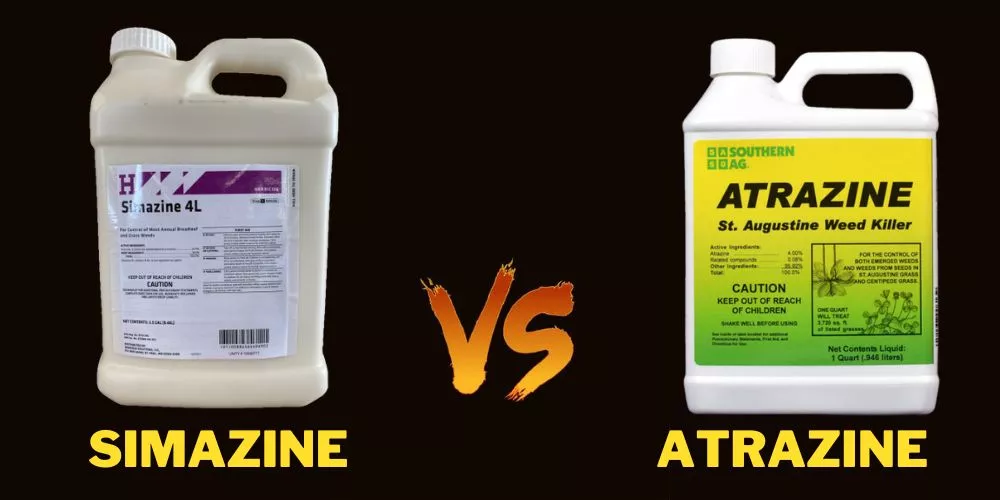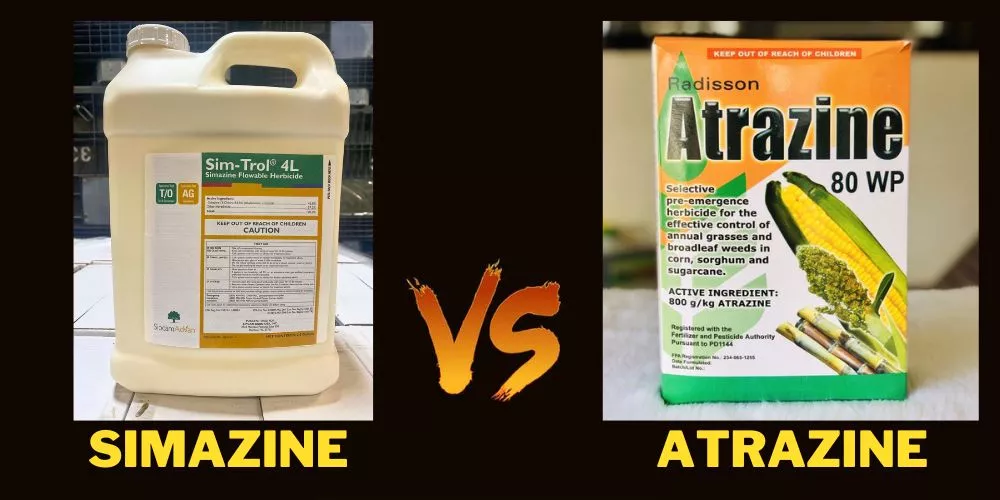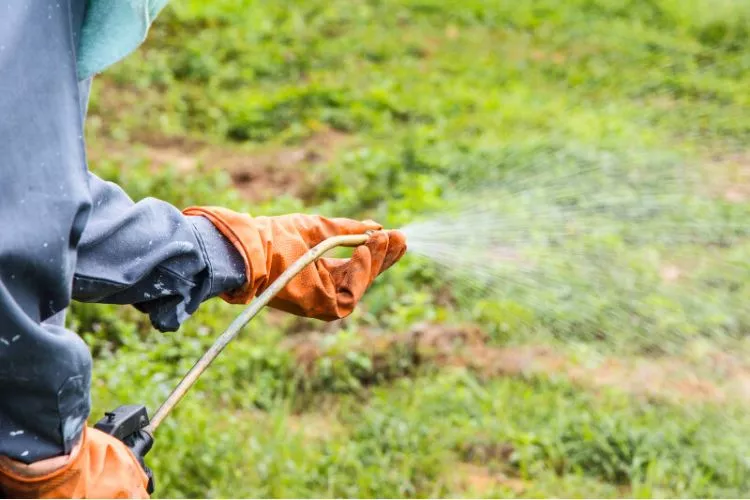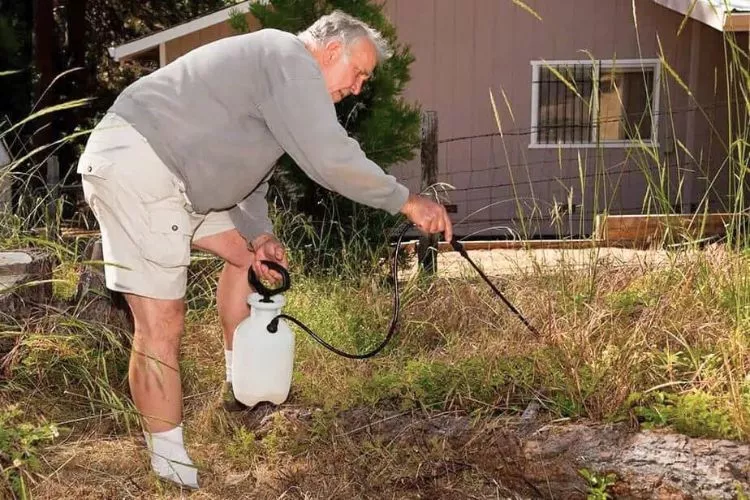Simazine and Atrazine, two prominent figures in agricultural weed management. While both share their roots in the triazine family and serve a common aim, they differ significantly in their application and mode of operation.
However, the most striking difference lies in their usage. At the same time, Atrazine is predominantly used in corn fields, Simazine finds its purpose in fruit orchards and vineyards, highlighting their varied spectrum of effectiveness against specific weeds. Let’s dive deep into simazine vs atrazine.

Simazine vs Atrazine: What is the difference between atrazine and simazine?
Modern herbicides like simazine and atrazine have firmly secured their positions. Both are extensively used in controlling invasive plant species, but how different or similar are they?

1. Definition and Composition
Simazine and Atrazine are pre-emergent herbicides, designed to prevent weed growth before they emerge from the soil. They belong to the group of triazines and have distinct chemical structures. Simazine chemically named as 6-chloro-N2,N4-diethyl-1,3,5-triazine-2,4-diamine, and atrazine named 6-chloro-N-ethyl-N’-(1-methylethyl)-1,3,5-triazine-2,4-diamine, function primarily by inhibiting photosynthesis in plants.
2. Effectiveness
Simazine and Atrazine demonstrate commendable strength and efficiency in controlling unwanted weed species.
Simazine is celebrated for its broad-spectrum weed control. It effectively controls a diverse range of weed species like chickweed, pigweed, and lamb’s quarters, especially in non-crop areas such as orchards and vineyards. Its mode of action mainly involves inhibiting the photosynthesis process, which blocks the electron flow at photosystem II in chloroplasts, resulting in the death of sensitive plants.
Whereas, Atrazine stands apart when suppressing broadleaf weeds and annual grasses. Its exceptional effectiveness lies primarily with crops like corn, sorghum, and sugarcane. Atrazine, similar to Simazine, disrupts photosynthesis, causing the plant to starve from a lack of energy production. It’s particularly noteworthy for controlling problematic weeds like velvetleaf, morning-glory, cocklebur, foxtails and panicums.
Moreover, field studies have shown that Atrazine consistently provided higher corn yields than other treatments. Simazine has been noted for its effectiveness in controlling perennial weeds in certain fruit production.
In essence, both herbicides exhibit unique effectiveness against different subsets of weeds, a deciding factor for their usage would largely depend on the type of weed species present in the area and their resilience to either Atrazine or Simazine.
3. Residual Activity and Persistence
Simazine and Atrazine’s legacy in the soil can be both a blessing and a challenge. Farmers often require fewer applications because they provide long-lasting weed control due to their residual activity. However, the residual activity of these herbicides means that they don’t just disappear after application – they can persist in the soil.
The persistence is attributed to their relatively low rate of breakdown. As per several studies, Atrazine’s half-life in the soil can range from 60 to 100 days, depending on soil type and environmental factors. On the other hand, Simazine can persist in the soil environment slightly less, with a half-life ranging from 60 to 90 days.
While this residual activity offers the benefit of extended weed control, it holds potential disadvantages too. There’s a risk of leaching, where these chemicals can infiltrate the deeper layers of soil and eventually might reach the groundwater sources. If not properly managed, this can lead to water safety and soil health issues.
Their persistence is not limited to the applied area only. They can be prone to runoff, particularly in areas with heavy rainfall or over-irrigation. This means they can find their way into water bodies, affecting the health of aquatic ecosystems.
In summary, their residual activity presents a paradox. On one hand, it’s the quality that makes them effective herbicides; on the other, it’s the trait that raises significant environmental concerns. Hence, agricultural practices involving these herbicides need to be managed responsibly.
4. Application and Safety
Given their respective importance in managing invasive plant species, let’s explore the application guidelines and safety measures associated with Simazine and Atrazine. These herbicides are usually applied as pre-emergent treatments, targeting weed germination before they emerge from the soil.

Application Rates and Methods
Although the application rates may vary depending on factors such as crop type, soil character, and region, general guidelines can be shared. Atrazine is typically applied at 1-2 kg/ha rates, ensuring optimal broadleaf weed control in corn, sorghum, and sugarcane crops. Simazine, however, has a wider application rate, ranging from 1-4 kg/ha based on the specific weed species and their densities.
Both herbicides can be applied using various methods, including granular applications, liquid sprays, and chemigation. Following label recommendations and consulting local agronomists to tailor the application rates and methods for individual scenarios is crucial.
Safety Precautions and Protective Gear
When using Simazine or Atrazine, it’s paramount to ensure individual safety by adopting the recommended practices. These could include:
- Wearing protective gear, such as gloves, goggles, and long-sleeve clothing, to minimize skin and eye exposure.
- Employing buffer zones, windbreaks, or drift-reduction technologies to minimize spray drift and potential off-target effects.
- Selecting appropriate nozzles and pressure settings to ensure the herbicide is effectively distributed in the targeted area.
Taking these precautions shields individuals from potential harm and helps minimize any collateral impact on the surrounding environment. This way, these powerful herbicides can be harnessed to their maximum potential while safeguarding the health of the applicators and the environment.
5. Ecological Impact
Their ecological footprint reveals that Simazine and Atrazine can negatively impact non-target organisms, including beneficial insects, aquatic life, and soil microorganisms. Their persistence propensity could potentially threaten overall biodiversity and ecosystem health.
6. Human Health Concerns
From a human health perspective, exposure to Simazine and Atrazine may pose health risks. Chronic exposure to Atrazine, for instance, has been linked to endocrine disruption in humans. Therefore, both have strict guidelines around their usage, with defined MRLs to ensure consumer safety.
In conclusion, while Simazine and Atrazine contribute significantly to weed management, balancing their use with potential ecological and human health interests is crucial.
What weeds are controlled by Simazine?
Simazine, principally regarded as a pre-emergent herbicide, is renowned for its broad range of weed control. It is effective against many weed species, often finding applications in fruit orchards, vineyards, and non-cropped areas.
Its efficacy extends to both broadleaf and grassy weeds. Notable broadleaf weeds controlled by Simazine include ragweed, nettle, pigweed, and lamb’s quarters. It is equally effective against grassy weeds like crabgrass, wooly cupgrass, and barnyard grass.
What makes Simazine particularly notable is its ability to combat certain persistent perennial weeds like wood sorrel and field bindweed, a group of weeds often resistant to many other pre-emergent herbicides.
Moreover, the residual activity of Simazine ensures that it remains active in soil for extended periods, offering continuous weed control over time. However, it is essential for users to strictly adhere to application guidelines, considering the herbicide’s persistence in the soil and the potential for environmental impact.
What weeds does Atrazine kill?
Atrazine, a triazine herbicide, is revered for its impressive efficacy in managing broadleaf weeds and annual grasses. Its potent weed-killing capabilities have made it a mainstay in corn, sorghum, and sugarcane crop fields.

For broadleaf weeds, Atrazine exhibits potent control against weeds like velvetleaf, ragweed, morning-glory, and cocklebur. These weeds, often disruptive in crop fields, can significantly reduce yield, making Atrazine an invaluable asset for those fields.
When it comes to annual grasses, Atrazine also showcases sound control. It is particularly effective against robust grass species like foxtails and panicums. These grasses, capable of causing substantial harm to crop health and yield, are efficiently managed using this weed killer.
Like Simazine, Atrazine also possesses significant residual activity, providing ongoing weed control over an extended period post-application. Nevertheless, due to the same residual activity and its potential to persist in the environment, careful handling and thoughtful application of Atrazine are imperative.
Other articles about controlling weed: How To Kill Orchard Grass In Your Lawn? | How To Use A Tiller To Remove Weeds
Frequently Asked Questions (FAQs)
Is Simazine Restricted Use?
Yes, Simazine is classified as a Restricted Use Pesticide (RUP) in the United States by the Environmental Protection Agency (EPA). This means its use is strictly limited to certified applicators or persons under their direct supervision, due to its capacity to cause environmental harm and health risks. Other countries may have similar restrictions, so it’s always best to consult local regulations before purchasing or applying Simazine.
Is Atrazine Harmful to Dogs?
Yes, Atrazine can harm dogs if consumed or exposed to high concentrations. If ingested in significant amounts, possible symptoms can include vomiting, diarrhea, difficulty breathing, muscle weakness, and potentially severe health issues. Also, long-term exposure can potentially lead to more chronic health problems. As such, it is crucial to ensure that storage and application of Atrazine keep the chemical well out of the reach of pets.
Is Atrazine Banned in the US?
No, Atrazine is not banned in the United States. While there have been ongoing concerns about its environmental and health impacts, the EPA has determined that the benefits of Atrazine as an herbicide outweigh its potential risks, given proper usage and regulation. However, its use is heavily regulated and monitored to prevent possible misuse. Atrazine has been banned in some European countries due to environmental concerns, but it remains legal and widely used in the US, primarily for corn.
Conclusion:
In the long-standing debate of Simazine vs Atrazine, it becomes evident that both herbicides have unique strengths, productive in controlling different types of weed species. Simazine excels with broadleaf and some perennial weeds, making it suitable for non-crop areas like orchards and vineyards.
Atrazine shines in controlling broadleaf weeds and annual grasses, crucial in corn, sorghum, and sugarcane crops. Highlighting their high residual activity offers a dual-edged perspective: continuous effective weed control and potential environmental considerations. Thus, these herbicides’ careful and responsible use becomes of utmost importance.


